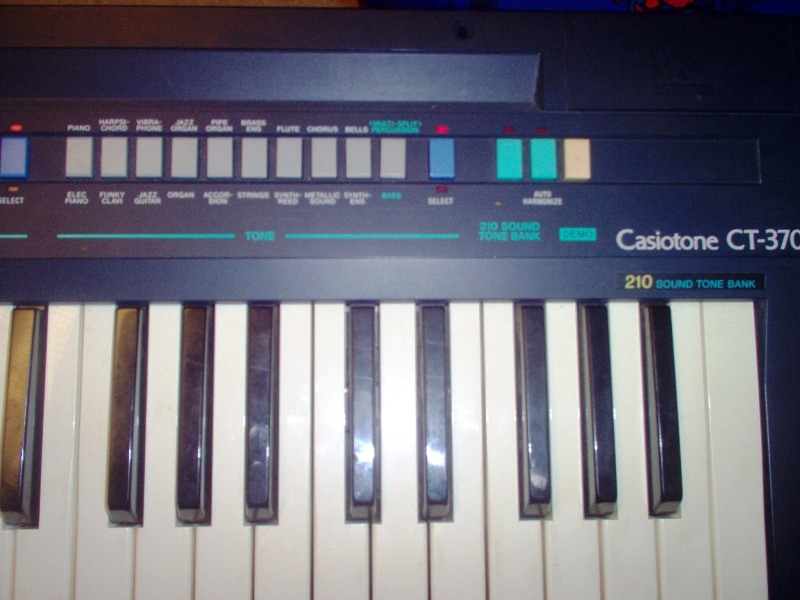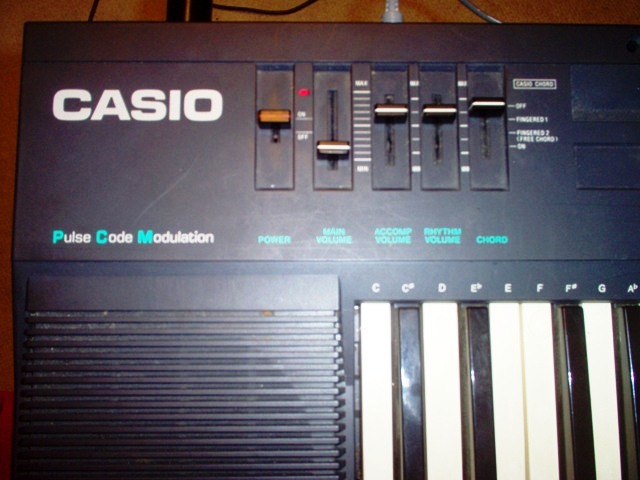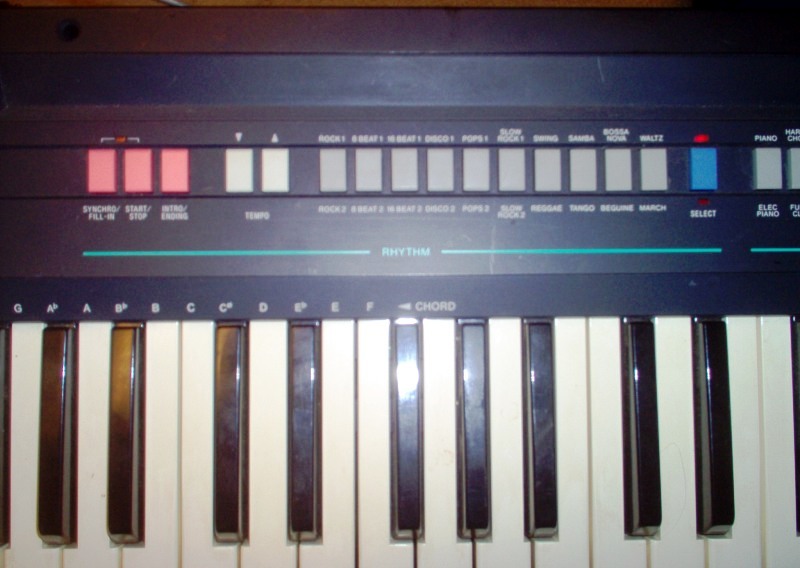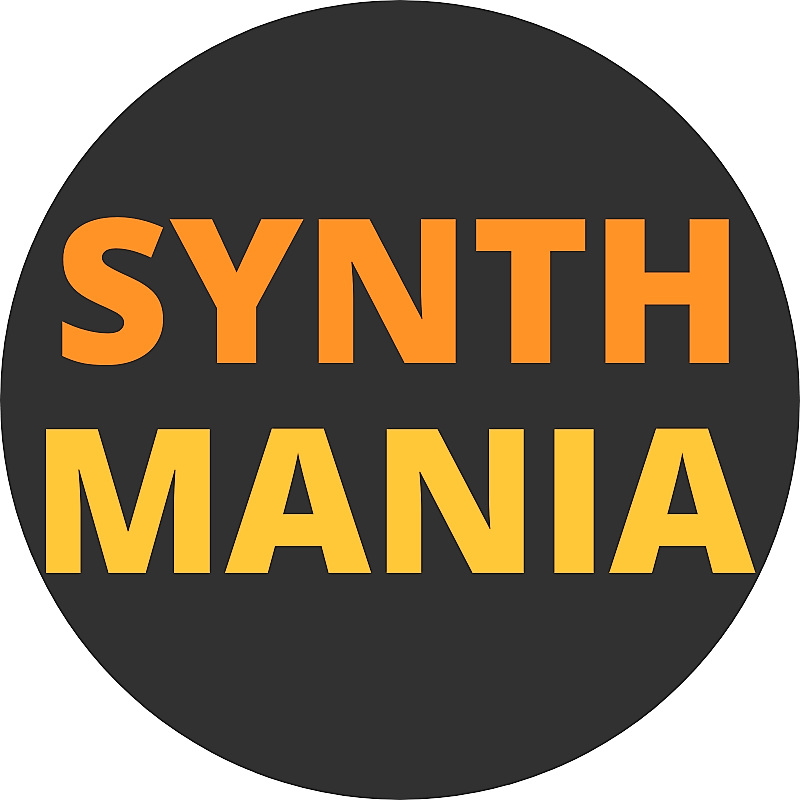Accompaniment keyboard

The Casio Casiotone CT-370 is a light, portable, but surprisingly sturdy, well-built keyboard produced during the late 1980s. Like all members of the Casiotone family, this instruments features many sounds and auto-accompaniments. The CT-370 can be powered via DC adaptor, or by six D-size batteries.
To the left of the panel we find a single speaker. Two (one on each side) would have been better, but there are many other Casio models that are stereo. Under the Casio logo lays a green and white message: “Pulse Code Modulation” – this is to remind us that the CT-370 is based upon PCM samples. In the 1980s, this was still a big deal. Following to the right there’s a series of five sliders: Power on/off, Main Volume, Accompaniment Volume, Rhythm Volume, and Chord type. While the first four are self explanatory, the fifth slider allows you to choose the way your keyboard is set up: you can have the full keyboard dedicated to one sound, with no left side auto-accompaniment, or you can set up two types of accompaniment, and the Casio chord feature (a simplified auto-accompaniment, where you press two keys and you get complex chords – useful for beginners).
Continuing to the right, there are three red buttons: these are the Synchro/Fill-In, Start/Stop, and Intro/Ending controls. They allow the user to: start the rhythm/accompaniment as soon as you touch the keyboard, start/stop the rhythm, and finally create a brief introduction, or finish in style with an automated ending. Very, very useful for performing live. Two grey buttons are dedicated to the tempo: faster, and slower.
A series of ten grey buttons allows you to choose the rhythm, while a lone blue button toggles between two settings, to access the remaining ten rhythms. The same for the Tone section.
Finally, two green and a yellow button that strangely are not well labeled: the first green button allows us to mix and match any two of the preset tones, for a whopping 210 tone bank. The second green button is the auto-harmonize, which harmonizes the right hand to the chord you’re playing on the left. And lastly, the yellow button is dedicated to the demo song.
The keyboard itself feels pleasantly light, and while this may be very bad for piano sounds (especially since it’s not dynamic), it’s perfect for organ or synth sounds. The back of the unit is very Spartan, with only the power connection, a 1/8″ mono output, and a tune knob.
This is not a bad keyboard, and now it may be even considered “PCM vintage” is there were such a thing 😉 The tone mix feature adds a lot to the overall sound – even though it obviously cuts the polyphony in half to five voices (hey! that never stopped the Prophet-5 😀 )
Today, the Casiotone concept is still going strong, with the CTK-series.
Casio CT-370 audio demos
The Casio Casiotone CT-370 factory demo (“Night Birds”, by British group Shakatak. A very similar version of this demo is also featured in the Casio CSM-1 module (CSM-1 DEMO SONG) , and it sounds pretty similar – I suspect the on-board ROM is based on the same samples)
Tones
Rhythms
Casio CT-370 manual
Casio CT-370 specs
- Portable and well built;
- Several good sounds;
- Auto Harmonize, mix sounds;
- easy to use
| Year of release | 1980s |
| Polyphony | 10-note |
| Presets | 20 (210 obtainable by linking two sounds together) |
| Rhythms | 20 |
| Keyboard | 49 keys |
| Responds to velocity | no |
| Sound generation method | PCM |
| MIDI | no |
| Sound expansion capabilities | no |
| Effects | auto harmonize |
| Controls | sliders |
| Outputs | mono |
| Display | no |
| Misc | built-in speaker |
Casio CT-370 photos

IM000548.JPG 
IM000547.JPG 
IM000545.JPG 
IM000546.JPG 

IM000549.JPG
Casio CT-370 links
https://www.casio.com/products/electronic-musical-instruments
